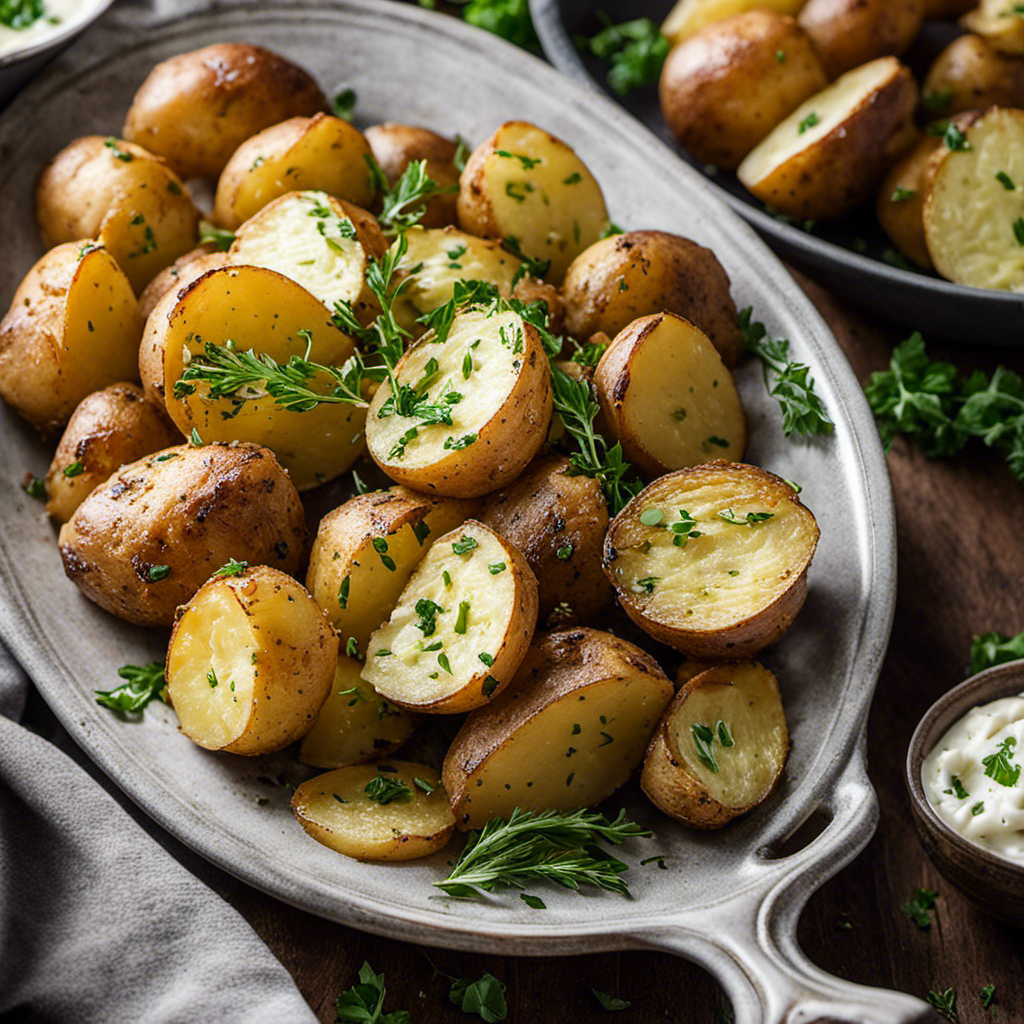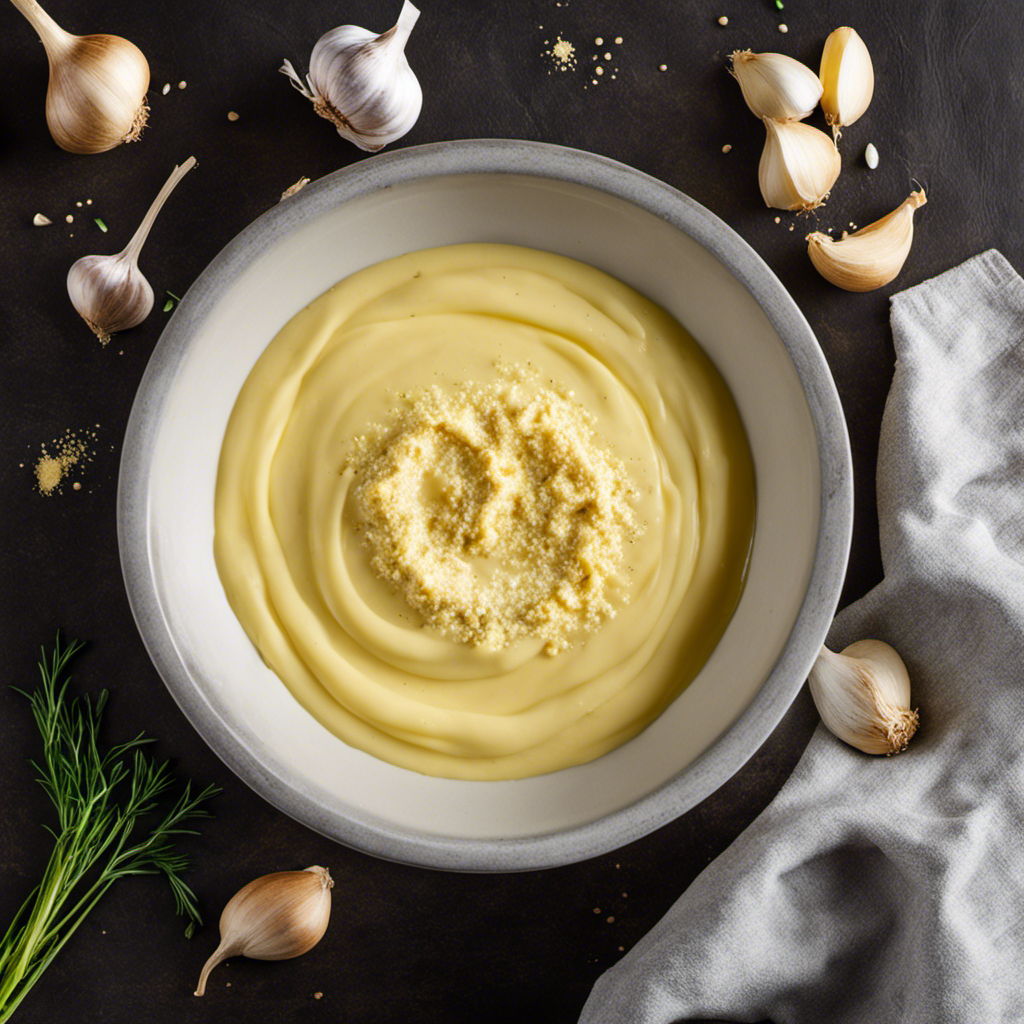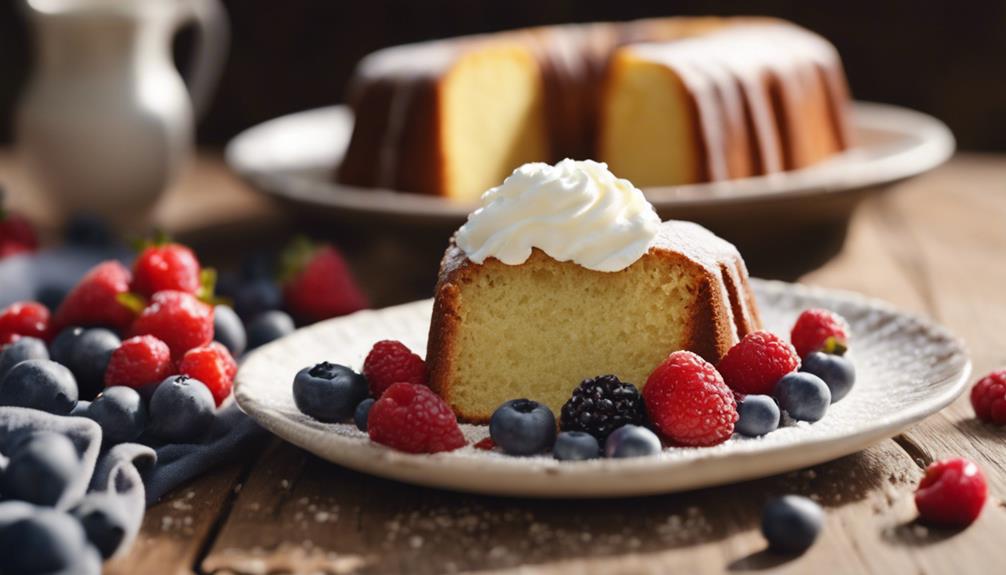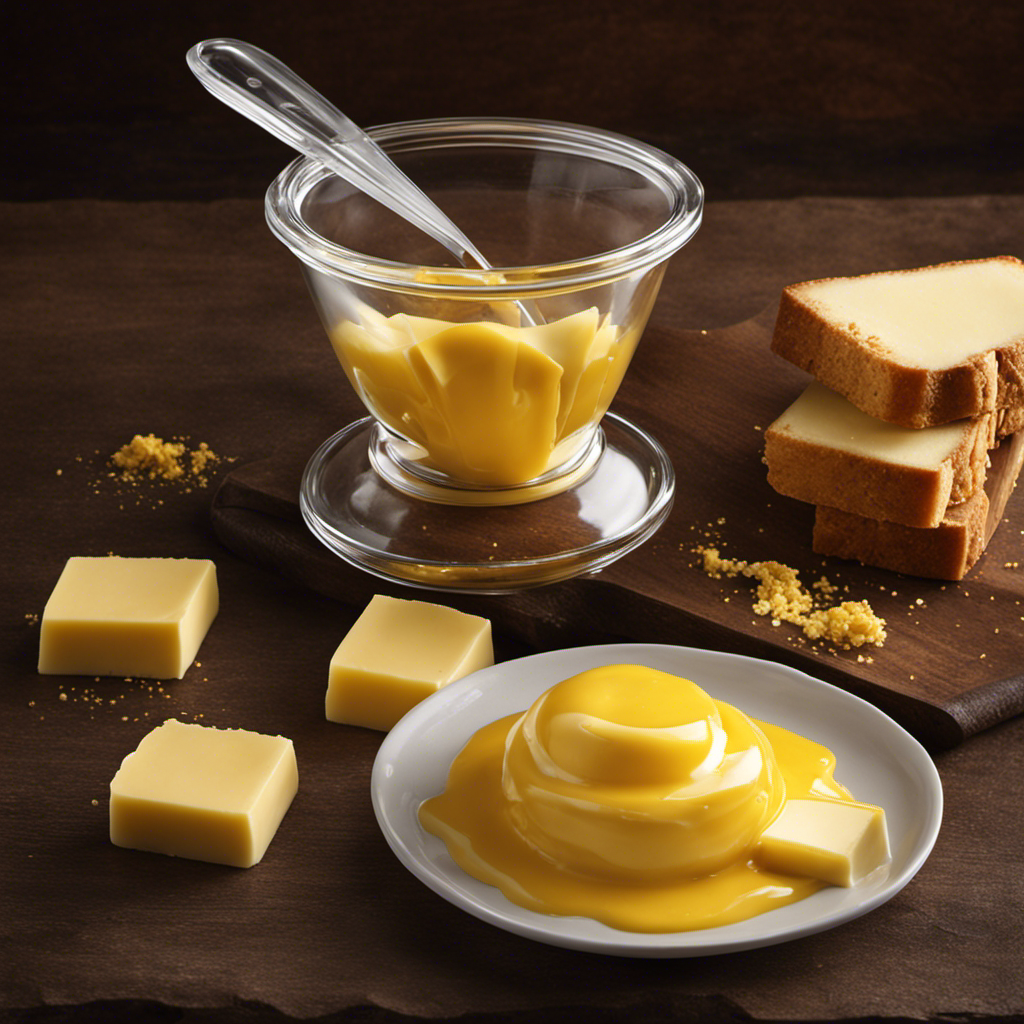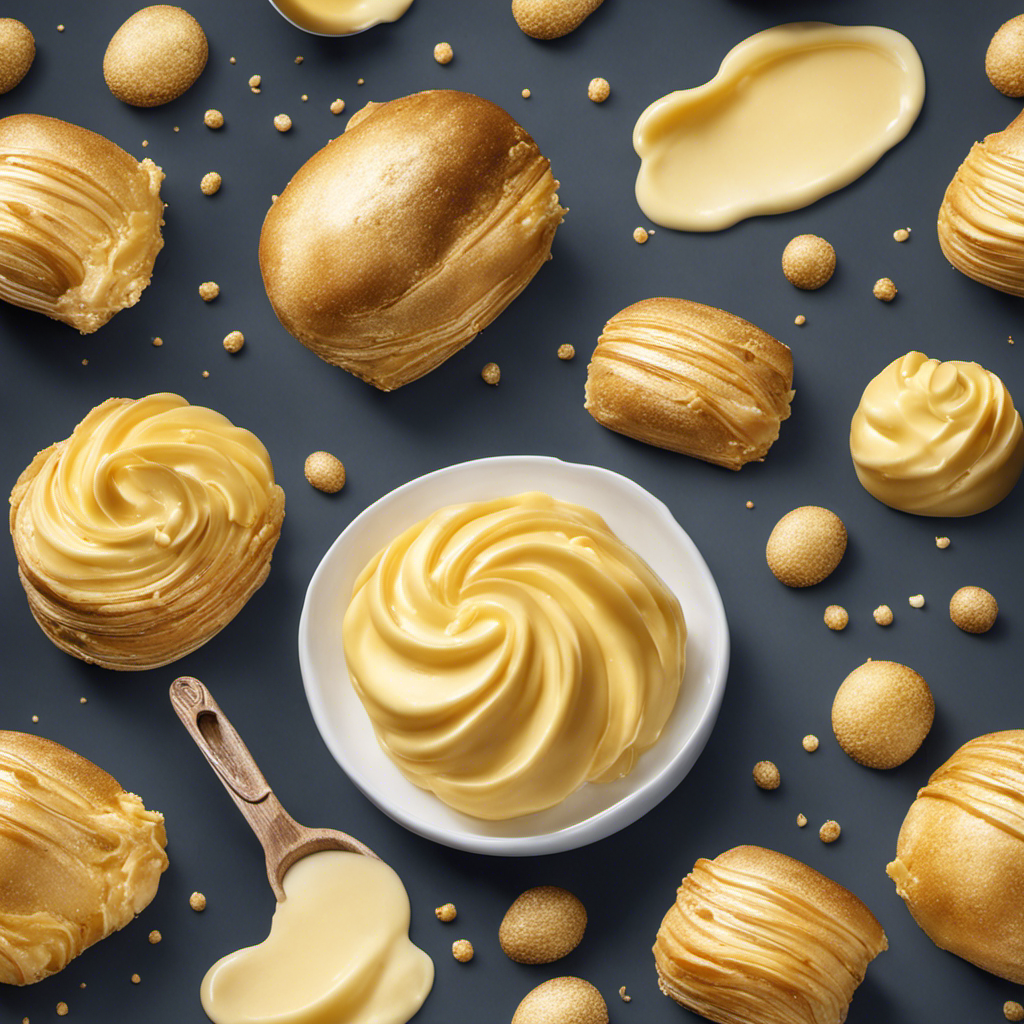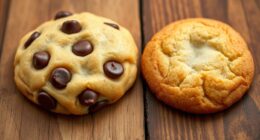I absolutely adore potatoes, and I must say, making garlic butter potatoes is like a flavor explosion in your mouth.
The creamy, buttery goodness combined with the sharp, aromatic garlic is a match made in culinary heaven.
In this article, I’ll guide you through the step-by-step process of selecting the perfect potatoes, preparing a mouthwatering garlic butter, and sautéing those spuds to perfection.
Get ready to elevate your potato game to a whole new level. Let’s dive in!
Key Takeaways
- Choose firm potatoes without sprouts.
- Different variations of garlic butter can provide a healthier twist.
- Be mindful of cooking time to avoid overcooking or undercooking.
- Experiment with different seasonings and flavor combinations for the potatoes.
Selecting the Potatoes
When selecting the potatoes for this recipe, you’ll want to choose ones that are firm and free of any sprouts. The right variety of potatoes can make a big difference in the final dish.
For garlic butter potatoes, I recommend using Yukon Gold or Russet potatoes. Yukon Gold potatoes have a creamy texture and buttery flavor, while Russet potatoes are fluffy and absorb flavors well. Both varieties hold their shape when cooked, making them perfect for roasting.
Once you have chosen the right potatoes, it is important to store them properly. Keep them in a cool, dark place, like a pantry or cellar, to prevent them from sprouting or turning green. Avoid storing them near onions or other vegetables as they can cause the potatoes to spoil faster.
Preparing the Garlic Butter
To start, you’ll need to chop up some fresh garlic cloves and mix them with softened butter. This is the base for our delicious garlic butter. Not only does it add incredible flavor to our dishes, but it also provides some amazing health benefits.
Garlic is known for its antibacterial and antiviral properties, which can help boost our immune system. It also contains antioxidants that can reduce the risk of certain chronic diseases.
Now, if you’re looking for some alternatives to traditional garlic butter, you can try using olive oil infused with garlic, or even avocado butter mixed with garlic powder. These alternatives still provide that rich and savory taste, but with a healthier twist.
Boiling the Potatoes
You’ll need to boil the potatoes until they are tender and easily pierced with a fork. Boiling potatoes is a crucial step in making the perfect garlic butter potatoes. Here are some tips to enhance the flavor and texture of your boiled potatoes:
-
Testing different potato varieties: Experiment with different types of potatoes like Yukon Gold, Russet, or Red potatoes to find the perfect one for your dish. Each variety has a distinct taste and texture that can complement the garlic butter.
-
Adding herbs and spices to the boiling water: Infusing the boiling water with herbs and spices can elevate the flavor of the potatoes. Try adding a few sprigs of rosemary or thyme, a clove of garlic, or a pinch of salt and pepper to enhance the taste.
-
Cooking time: Be mindful of the cooking time. Overcooking can result in mushy potatoes, while undercooking will leave them too firm. Keep an eye on them and test for doneness by inserting a fork into the potatoes. They should be tender but still hold their shape.
Sautéing the Potatoes in Garlic Butter
When it comes to cooking potatoes, one of the most important factors to consider is whether you prefer them crispy or tender.
The cooking time plays a crucial role in achieving the perfect texture for your potatoes. Whether you opt for a quick sauté or a longer roast in the oven, understanding the ideal cooking time can make all the difference in creating a dish that is both delicious and satisfying.
Crispy or Tender Potatoes
For crispy or tender potatoes, make sure to adjust the cooking time and temperature accordingly. Achieving the perfect texture is key to a delicious potato dish.
Here are a few tips to help you get the desired outcome:
-
Cut the potatoes into uniform sizes: This ensures even cooking and prevents some pieces from becoming overly crispy while others remain undercooked.
-
Increase the oven temperature for crispiness: If you prefer a crispy exterior, turn up the heat a bit and roast the potatoes at a higher temperature.
-
Decrease the cooking time for tenderness: If you prefer a tender texture, reduce the cooking time slightly and keep an eye on the potatoes to prevent them from becoming too crispy.
Cooking Time for Perfection
Achieving the perfect texture for your potatoes is all about finding the right cooking time and temperature. Cooking techniques play a crucial role in determining whether your potatoes turn out crispy or tender.
To get crispy potatoes, roast them at a high temperature, around 425°F, for about 30 minutes. This will give them a golden brown exterior with a soft and fluffy interior.
If you prefer tender potatoes, boil them in salted water for about 15 minutes until they are fork-tender. The cooking time may vary depending on the size of your potatoes, so keep an eye on them.
Experimenting with different cooking times and temperatures will allow you to discover the perfect texture and flavor variations for your garlic butter potatoes.
Seasoning the Potatoes
To season the potatoes, you’ll want to mix together garlic powder, salt, and pepper in a small bowl. This simple combination of flavors will elevate the taste of your garlic butter potatoes to new heights. However, if you’re feeling adventurous, there are many other seasoning options you can try.
Here are three ideas to get you started:
- Smoked paprika: Add a smoky and slightly sweet flavor to your potatoes by sprinkling some smoked paprika on top. It pairs perfectly with the rich garlic butter.
- Italian herbs: For a Mediterranean twist, mix in some dried Italian herbs like oregano, basil, and thyme. These fragrant herbs will infuse your potatoes with a burst of freshness.
- Cajun seasoning: If you’re craving a little spice, dust your potatoes with some Cajun seasoning. The combination of herbs, spices, and a hint of heat will bring a bold and zesty flavor to your dish.
When it comes to achieving a crispy texture on the potatoes, there are a few tips to keep in mind. First, make sure you cut the potatoes into evenly sized pieces to ensure they cook evenly. Second, preheat your baking sheet in the oven before adding the potatoes. This will help create a crispy exterior. Lastly, after tossing the potatoes in the garlic butter mixture, spread them out in a single layer on the baking sheet. Crowding the potatoes will result in steaming instead of crisping.
Follow these tips and your garlic butter potatoes will turn out perfectly crispy and delicious every time.
Serving and Enjoying the Garlic Butter Potatoes
When it comes to serving these delicious garlic butter potatoes, there are a few key points to consider.
First, let’s talk about the ideal serving portions. Whether you’re serving these as a side dish or a main course, it’s important to get the portion size just right.
Additionally, I’ll provide some pairing suggestions to complement the rich and flavorful taste of the potatoes.
Ideal Serving Portions
For your ideal serving portions of garlic butter potatoes, make sure to scoop out just the right amount onto each plate. You don’t want to overwhelm your guests with a mountain of potatoes or leave them hungry with a measly portion.
Here are some tips to help you get the portion sizes just right:
-
Consider the main course: If your garlic butter potatoes are a side dish, aim for about 1/2 cup per person. If they are the main attraction, increase the portion size to around 1 cup.
-
Take into account dietary restrictions: If you have guests with dietary restrictions or preferences, such as gluten-free or low-carb, adjust the portion sizes accordingly. Offer smaller portions or alternative options to accommodate their needs.
-
Think about leftovers: Garlic butter potatoes can be reheated and enjoyed later. Be mindful of portion sizes so that you have enough leftovers for another meal without excessive wastage.
Pairing Suggestions
Consider serving your garlic butter potatoes with a juicy steak or grilled chicken for a satisfying and flavorful meal. The creamy and savory taste of the garlic butter perfectly complements the richness of these main dishes. However, if you’re looking for alternative flavor variations, there are plenty of options to explore. You can add a touch of heat by sprinkling some chili flakes or paprika on top of the potatoes. For a tangy twist, squeeze fresh lemon juice over the potatoes before serving. Another option is to sprinkle some grated Parmesan cheese for a cheesy and indulgent flavor. Additionally, you can experiment with different herbs like rosemary or thyme to enhance the aroma and taste. These combinations will surely elevate your garlic butter potatoes to new heights of deliciousness.
| Alternative Flavor Variations | Recommended Main Dishes |
|---|---|
| Chili flakes or paprika | Juicy steak |
| Fresh lemon juice | Grilled chicken |
| Grated Parmesan cheese | Roasted vegetables |
| Rosemary or thyme | Baked salmon |
| Garlic powder or onion powder | Pan-seared pork chops |
Frequently Asked Questions
Can I Use Any Type of Potatoes for This Recipe?
Yes, you can use any type of potatoes for this recipe. However, some types like Yukon Gold or Russet work best because they have a creamy texture that complements the garlic butter flavors perfectly.
How Long Does It Take to Prepare the Garlic Butter?
It usually takes me about 10 minutes to prepare the garlic butter. I like to use fresh garlic, unsalted butter, and a pinch of salt. However, you can also try alternative ingredients like garlic powder or herb-infused butter.
Should I Peel the Potatoes Before Boiling Them?
Should I season the potatoes before boiling them? It depends on personal preference. Some like to add salt and herbs for extra flavor, while others prefer to season after boiling. Another option is to roast or mash potatoes without peeling them.
Can I Substitute Olive Oil for Butter in This Recipe?
Sure, you can substitute olive oil for butter in this recipe. It’s a healthier option and adds a light, fruity taste to the potatoes. Plus, using alternative cooking methods like roasting or grilling can enhance the flavors even more.
How Do I Know if the Potatoes Are Cooked Enough During Boiling?
To check if potatoes are cooked enough during boiling, I gently pierce them with a fork. If it goes in easily and the potatoes are tender when I bite into them, they’re done. Alternatively, I can use a knife to check for tenderness.
Conclusion
And just like that, my kitchen was filled with the irresistible aroma of garlic butter potatoes.
As I took my first bite, the crispy exterior gave way to a creamy and flavorful center.
The garlic butter added a richness that elevated the humble potatoes to a whole new level of deliciousness.
It was a happy coincidence that I stumbled upon this recipe, and now I can’t imagine my meals without these mouthwatering potatoes.
Trust me, once you try them, you’ll be hooked too.
